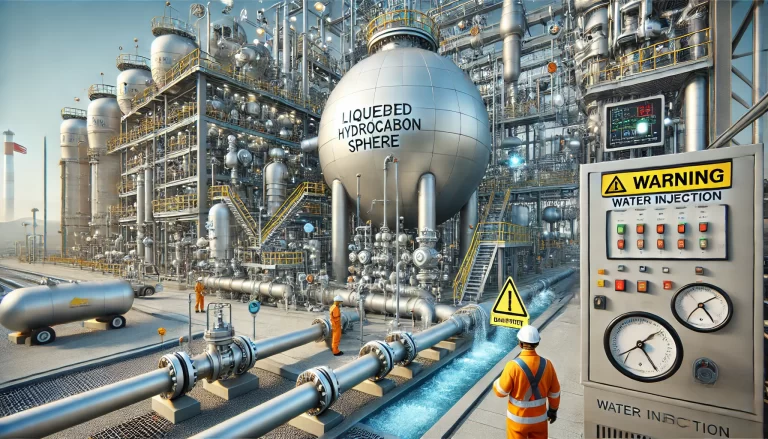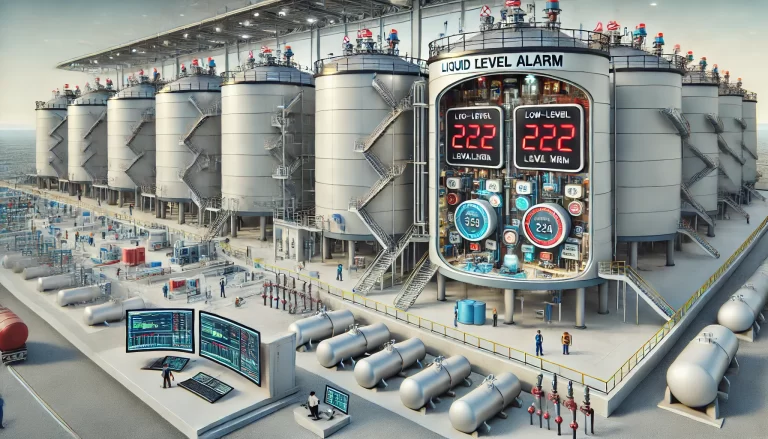Properly setting up and maintaining level alarms and instrumentation for storage tanks is essential for ensuring the safety and efficiency of operations. These systems are designed to monitor liquid levels in tanks, alerting operators to any anomalies and preventing overflows or dry runs that could damage equipment or compromise safety. Below is a detailed overview of the specifications and guidelines that are typically followed when setting up tank level alarms and associated instrumentation.
1. Selection of Level Measurement Instruments
The first step in setting up tank level alarms is selecting the right level measurement instrument. The choice of instrument depends on factors such as the tank material, the properties of the liquid being stored (corrosiveness, viscosity, temperature, etc.), and the operating environment. Common types of level measurement instruments include:
- Float-type level sensors: These are traditional devices that use a float that rises and falls with the liquid level, often used in non-corrosive or low-pressure applications.
- Radar level sensors: These are ideal for high-pressure, high-temperature, or corrosive environments. They work by emitting electromagnetic waves that reflect off the liquid surface to measure the distance.
- Ultrasonic level sensors: These devices emit sound waves that reflect back from the liquid surface, suitable for non-contact measurement applications.
- Capacitance level sensors: These measure changes in capacitance between two electrodes as the liquid level changes, commonly used for bulk solids or liquids with specific characteristics.
The selected instrument must meet the operational requirements of the tank, including the measurement range, accuracy, and compatibility with the type of liquid stored.

2. Alarm Settings and Configuration
Once the appropriate instrumentation is selected, it’s crucial to set the alarm thresholds at the correct levels. Alarm settings must ensure that the system can reliably warn operators of any unsafe conditions before they escalate into problems. These settings typically include:
- Low-level alarm: This is typically set at the minimum allowable liquid level, below which the tank could become exposed to air, which may damage pumps or cause operational issues. This alarm warns operators that the tank needs to be replenished.
- High-level alarm: This alarm is usually set near the full capacity of the tank to prevent overfilling, which could lead to overflow, environmental hazards, or equipment damage. It acts as an early warning to operators to stop the inflow of liquid into the tank.
- Overfill or extreme high-level alarm: This is the most critical alarm setting, activated when the liquid level approaches or exceeds the maximum safe capacity of the tank. At this point, there is a high risk of spillage, and immediate intervention is required.
3. Alarm Point Setting Criteria
When setting alarm points, it is important to establish thresholds that allow for a staged response to varying levels of risk. A tiered alarm system ensures that operators are given enough time to react and take corrective action. Alarm point setup generally follows these guidelines:
- First-level alarm: Often a warning alert that signals operators to monitor the tank and adjust operations to prevent further escalation.
- Second-level alarm: This is more urgent, indicating that the situation is worsening and requires immediate attention to prevent overflow or damage.
- Third-level alarm (emergency): The highest level of alarm, which indicates that critical levels have been reached, and immediate corrective action (e.g., stopping the flow, triggering emergency shutdown procedures) is necessary.
The specific values for these alarm thresholds depend on tank size, liquid volatility, and operational safety protocols.

4. Accuracy and Precision Requirements for Measurement Instruments
The level measurement instruments should meet specific accuracy and precision standards to ensure reliable alarm functionality. Typically, the accuracy requirement for these devices should be within ±1% of the full scale or better, depending on the application.
For high-precision applications, such as in the chemical or pharmaceutical industries, instruments with a higher degree of accuracy may be required to ensure the liquid levels are closely monitored. High accuracy minimizes the risk of false alarms or undetected problems.
5. Instrument Alarm Integration and Control System
To optimize safety and operational efficiency, level alarms should be integrated with the plant’s control systems. This integration allows for automatic actions to be triggered when an alarm occurs. For example:
- When a high-level alarm is triggered, the system can automatically shut off the inflow of liquid to the tank or open valves to divert the liquid to a holding area.
- In some systems, alarms can also trigger auxiliary pumps or emergency measures such as a secondary overflow containment system.
This integration ensures that operators are not solely reliant on visual or audible alarms but that the system can take preventive or corrective actions autonomously.
6. System Reliability and Redundancy Design
The reliability of level measurement and alarm systems is critical, especially in hazardous environments such as chemical storage or petroleum tanks. Redundancy is key to ensuring that if one part of the system fails, another can take over without interrupting the alarm function.
- Dual sensors: In many critical applications, redundant level sensors are used, so if one sensor fails, the second one continues to provide data.
- Power supply redundancy: Backup power systems (e.g., UPS) are often used to keep alarm systems functioning during power outages.
- Signal redundancy: To ensure reliability, signal transmission systems should have built-in failover mechanisms to maintain communication even in the event of a failure.
Redundancy helps to ensure the continuous operation of the alarm system and enhances its safety functions.

7. Testing, Calibration, and Maintenance
Regular testing and maintenance are vital for ensuring the ongoing accuracy and reliability of tank level alarms. Periodic calibration should be performed to verify that the level sensors are reading correctly, and that the alarm setpoints are still appropriate for the operation. Routine maintenance includes:
- Inspecting sensors for wear and tear, ensuring they are free of debris or corrosion.
- Testing the alarm system to confirm that it responds to the expected threshold levels.
- Checking the integration with the plant’s control systems to ensure the automation works correctly when alarms are triggered.
A preventive maintenance program can significantly reduce the risk of failure and false alarms.
8. Compliance with Standards and Regulations
All tank level monitoring systems must comply with relevant industry standards and safety regulations. For example, in the United States, compliance with OSHA, NFPA, and API standards is required for many industrial applications. In Europe, compliance with EN and ISO standards is critical. These standards often set out specific requirements for the design, operation, and maintenance of tank level instrumentation and alarm systems.
Ensuring compliance with these standards not only guarantees safety but also protects against legal liabilities and potential fines.

Conclusion
Tank level alarm systems are a critical aspect of industrial safety, helping to prevent dangerous incidents such as overflows, spills, and equipment damage. Proper selection, installation, configuration, and maintenance of these systems ensure that they function reliably and effectively. By adhering to the above specifications, organizations can ensure that their storage tanks are properly monitored, and their operational risks are minimized.
